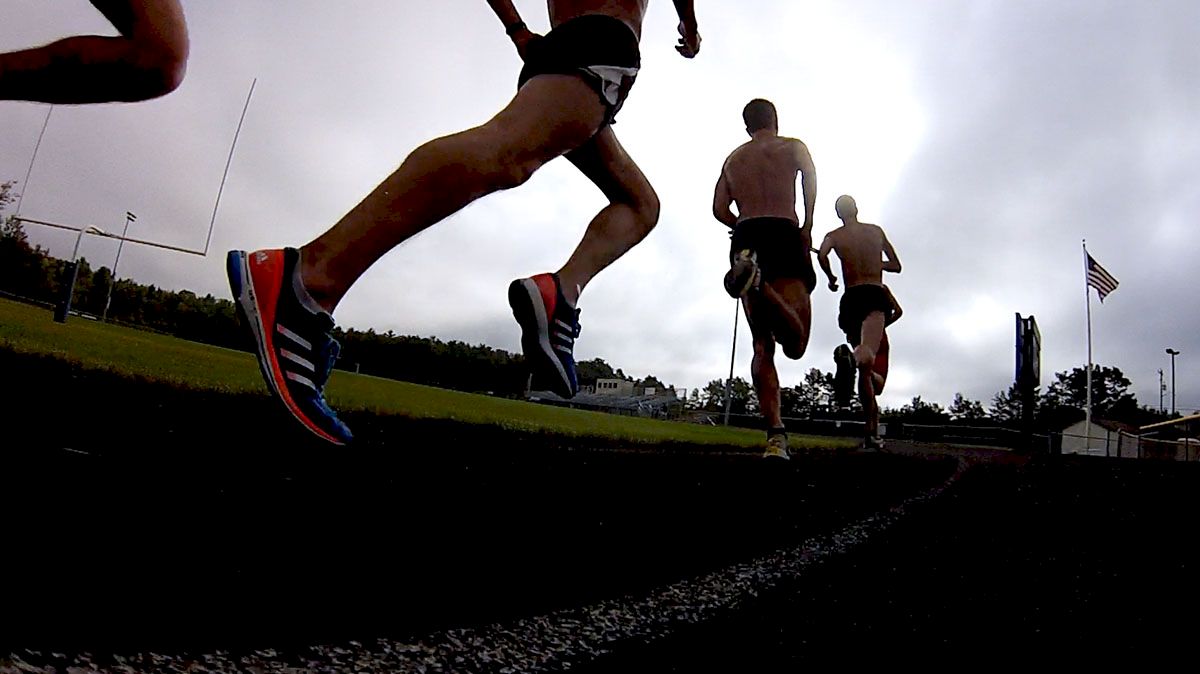Living The High Life By Danny Mackey
Living The High Life By Danny Mackey

Living The High Life
by Danny Mackey M.S.
Altitude tents have a personal interest to me. One major reason is because last year, I decide to be a subject with an ongoing study AND help my own running. So I started using an altitude tent. The problems began right after I bombed in the trials (unrelated to the tent) and began having sleep issues relating to disappointment from the race, then to make matters worse I bumped up the tent to 12,000 feet. Combine sleeping 2 hours a night, full-time job, and 12,000 feet air while I’m supposed to be resting…you have the beginnings of receipt for disaster. Long story short; I was in and out of the doctors most of the spring and I could barely run times I ran in high school. By March my red blood cell count had dropped 11% (scary bad), hematocrit was in the 30’s, my thyroid levels were low and my cortisol levels were sky high. What I used to increase my performance had the opposite effect. I began looking more into these tents and found that there is not much actually known research wise.
So why don’t we talk about them…altitude tents; are they beneficial?
Why do athletes use, or want to use altitude tents?
Considering the differences in performance outcomes are minimal, any gain in fitness (non-cheating of course, though that is an important controversial discussion, in my opinion, relating to tents) should be considered. As evident in the 2000 Olympic Men’s 10,000 meter final won in 27:18.20, second was 27:18.29, third was 27:19.75, among the three finishers 0.04% separated the 3 athletes. Pretty close huh? That is one big reason; as runners we live in a world of milliseconds. Using that same Olympic race as an example………all those fast guys live and train at altitude. These results help to illustrate why most contemporary endurance athletes feel compelled to incorporate a “form” of altitude training. Although the efficacy of altitude training (or hypoxic training, hypoxia literally means deficiency of oxygen in the body) relative to sea-level performance remains controversial from a research perspective, athletes continue to use it in preparation for elite level competition.
Living and training at altitude can also be skewed to benefit the performance state of an athlete. There are two different kinds of way to live and train: live high-train high or live high-train low. In my situation, as most athletes using an altitude tent are attempting to simulate the live high-train low environment. Evidence, both anecdotal and scientific, show that the benefit of training low is that athletes will not lose race specific fitness and turnover. Another way to look at it is; high altitude or hypoxic living/sleeping will increase red blood cell volume and sea-level training can maintain sea-level training intensity and oxygen flux. We get the benefits of both worlds! Sweet! Or is that the case? Looking at my personal circumstance may argue otherwise…
One notable difference between altitude/hypoxic tents and natural altitude is the tents are normobaric. Whether you are in Oregon or on the top of Mount Everest the air is 20.9% oxygen and 79.0% nitrogen, the only difference is the atmospheric pressure it much lower on Mount Everest (~about 1/3 of what is at sea level). As altitude increases, the air becomes thinner, the density of air decreases, and the pressure of the air decreases as well. As the air becomes less dense, the air contains less gases per unit of volume, and therefore less oxygen. The tents could only mimic this by having thick steel walls able to handle a drop in pressure. It is weird enough to have a tent in your room, a steel chamber? So the next option is the use nitrogen dilution. What the generator will do is take the ambient air and turn it into 100% nitrogen air and pump it inside the tent. This can change the concentration inside the tent to approximately 15% oxygen and 85% nitrogen (this specific concentration is supposed to mimic about 7,000 feet altitude), the higher you want to go up, the less oxygen you want available. Stemming from this rational arise other questions in protocol of using these tents. First, what is the optimal altitude at which to live. Second, how many days are required at altitude. Third, how many hours per day required? Questions, questions, questions. In the essence of saving your time, I will just bring about these questions for now and not discuss them….
Do these things work?
Well that is the million dollar question. Thus far research regarding several the methods of live high-train low is either limited or equivocal, particularly regarding the optimal live high-train low (hypoxic dose, like sleeping in a tent) method. Living in a stimulated altitude of above 10,000 feet may have an impact on ability of the body to produce a normal immune response, BUT this effect may not have physiological significant consequences. So something might happen, that may be an increase in red blood cell concentration, something adverse (like increase of stress hormones), or nothing we can notice. In due time, research will bring us more and more evidence to help us make the correct decision. The best science can show us is that there is a considerable individual variation in the physiological responses of athletes and that the differentiation between responders and nonresponders is probably based in part on genetic predisposition. In other words, did I just blindly roll the dice when I last September?